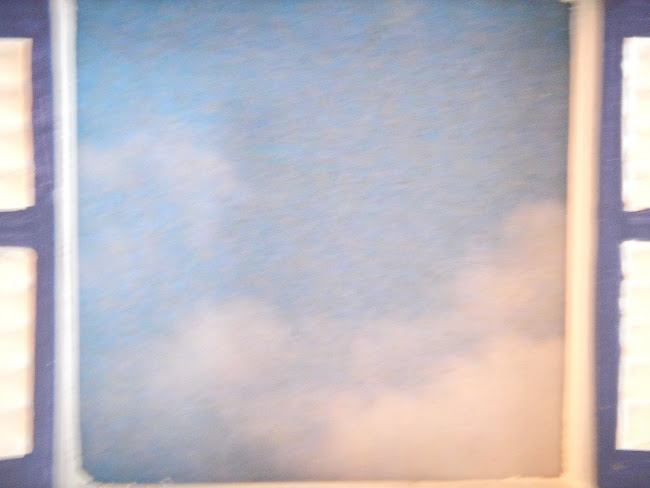巴黎的亞洲藝術博物館。
展出中國、日本、韓國和越南
的歷史文物。
館內收藏巴黎市政府收購的作品,
包括博物館創始人亨利-塞努斯基 (1821-1896)
於19 世纪遺贈的 5000 件作品。
亨利-塞努斯基
對於藝術
有獨特的遠見與支持。
也願意慷慨貢獻、
分享世人豐盛的藝術饗宴。
他1865年成為享譽法國的
經濟學家。
遊歷亞洲後,
在巴黎建造了一座別墅。
該建築由荷蘭出生的建築師
William Bouwens
van der Boijen建造,
具有1840年義大利北部流行的
新古典主義風格的博物館。
博物館展覽的作品可以追溯到
20世紀50年代末。
在20世紀上半期,
主要是關注中國古代藝術。
中國古代藝術收藏的青銅器和陶瓷
約8000件。
也包括重要的石雕和紙或絲綢畫。
透過構成這些作品的數量和多樣性,
我們看到中國5000多年的歷史 -
古代和史前中國,許多可以追溯到
新石器時代的赤陶和玉花瓶,
是收藏中最古老的物品。
還有漢朝(公元前206年-220年)
和唐朝(618-907年)的藝術,
見證佛教進入中國的石雕、
或石磚和印章。
在20世紀50年代,
開始對現代繪畫開放。
如今,博物館獲得許多捐贈,
古今藝術都在此散發光與熱。
在150紀念週年之際
進行了特別修復
( 博物館要求進行徹底的重新設計,
根據新的展覽要求以及現代安全
和無障礙標準進行場景設計。
同時加強建築物的隔熱效果,
並顯著改善了博物館的能量平衡。)
入口處以十二米的木雕巨龍
作為開啓佛陀展覽室的序幕。
一座震撼人心的巨大佛雕 -
阿彌陀佛 ,
是安置了一個多世紀的鎮舘之寶。
1603年到1867年之間的
青銅雕像,
是日本東京郊區一座寺院火災中
倖存的。
流落露天多年,歷經滄桑,
然而絲毫不損佛像莊嚴。
Cernuschi 於1871年以500金幣
得以將佛雕遷至巴黎。
來到樓上佛菩薩雕塑展覽室。
仰望一尊尊慈悲莊嚴的雕像 -
阿彌陀佛、觀音菩薩、
地藏王菩薩 ⋯
感覺清淨安寧、滿室生輝。
時間彷彿靜止在莊嚴肅穆中。
後記:
釋迦入滅之際,
告弟子應以法, 戒為師.
佛菩薩形象藝術
由佛弟子對於佛國淨土的憧憬,
仰慕佛, 紀念佛而興盛.
無不以清淨莊嚴心沐手創作,
彰顯佛菩薩的精神與美。
紀元前三世紀的印度孔雀王朝阿育王
是初期佛教藝術的先驅。
他保存佛舍利子,
興建八萬四千座佛塔,供佛弟子禮拜。
中國的隋、唐、宋、元、明各代
皆有在石窟創作幾千尊佛菩蕯的雕像。
久經氣溫、種種自然因素
損壞雕像是無奈,
然而竟然有不肖之徒
盜取佛菩薩雕像
甚至砍去佛首、手、腳
以便攜帶變賣圖利的邪惡無恥行為。
我們可看到慈悲莊嚴的佛菩薩造像
遍佈全世界各地博物館,
然而多少佛菩薩無手、腳、身首異處的
雕像令人驚訝痛心。
不論以何形象呈現世人,
佛菩薩依然是佛菩薩
永遠是慈悲、善良、美好的。
與您分享我的影音:
Share my video with you :
https://youtube.com/shorts/LVFd70Gy5pY?feature=shared
Asian Art Museum in Paris.
Exhibited the historical relics of China, Japan, South Korea and Vietnam.
The museum has a collection of works acquired by the Paris Municipal Government,
including the founder
of the museum,
Henri Cernuschi ( 1821-1896 )
5,000 works bequeathed in the 19th century.
Henri Cernuschi
had a unique vision and support
for art.
He was also willing to contribute generously,
share the world's rich artistic feast.
He became a famous French economist in 1865.
After travelling in Asia,
A villa was built in Paris.
The building was built by a Dutch-born architect William Bouwens van der Boijen.
With the era of 1840
popular in northern Italy
A museum in neoclassical style.
The works exhibited in the museum can be traced back to the late 1950s.
In the first half of the 20th century,
it mainly focusses on
ancient Chinese art.
Bronzes and ceramics in the collection of ancient Chinese art
About 8,000 pieces.
It also includes important stone carvings and paper or silk paintings. Through the number of these works and diversity,
we saw the history of China for more than 5,000 years -
In ancient and prehistoric China,
many red pottery and jade vases dating back to the Neolithic period
are the oldest items in the collection.
And the Han Dynasty (206-220 BC) And the art of the Tang Dynasty
(618-907),
witnessing the stone carvings of Buddhism entering China,
also stone bricks and seals.
In the 1950s
it began to open up to modern painting.
Nowadays, the museum has received many donations,
ancient and modern art shine here.
On the occasion of the 150th anniversary
special restoration has been
carried out ( the museum requires a thorough redesign, and the scene design is carried out according to
the new exhibition requirements
and modern safety and accessibility standards.
At the same time, it strengthens the thermal insulation effect of the building and significantly improves the energy balance of the museum.)
There is a twelve-metre wooden carved dragon at the entrance
as the prelude to the enlightenment Buddha exhibition room.
A huge Buddha sculpture that shocks people's hearts -
Amitabha Buddha.
It is the treasure of the town that has been placed for more than a century.
Between 1603 and 1867
Bronze statue.
It was in a temple fire in the suburbs of Tokyo, Japan.
Survived after drifting in the open air for many years,
through the vicissitudes of life.
However, it does not damage the solemnity of the Buddha statue
at all.
In 1871 Cernuschi with 500 gold coins to obtain the Buddha sculpture.
Finally the Buddha sculpture was moved to Paris.
Come to the the Buddha and Bodhisattva sculpture exhibition room upstairs
Looking up at a compassionate and solemn statue -
Amitabha Buddha,
Guanyin Bodhisattva,
Ksitigarbha Bodhisattva…
I feel pure and peaceful,
and the room is full of glory.
Time seems to stand still in solemnity.
Postscript:
At the time of Shakyamuni's death,
told the disciples to take the Buddha's teaching
and precepts as teacher.
Buddha and Bodhisattva image art
from the Buddhist disciples' longing for the Pure Land of Buddhism,
Admire Buddha, commemorate Buddha
and flourish.
Create with a pure and solemn heart.
Highlight the spirit and beauty of Buddha and Bodhisattva.
King Ashoka of the Indian Peacock Dynasty in the third century BC was the pioneer of early Buddhist art.
He preserved the benefits of the Buddhist house and built 84,000 pagodas for Buddhist disciples to worship.
Thousands of statues have been created in the grottoes during China's Sui, Tang, Song, Yuan and Ming Dynasties.
Long-term temperature, various natural factors…
The damage to the statue is helpless.
However, there were some people who were not ashamed,
stole the statues of Buddha and Bodhisattva.
Even cut off the Buddha's head,
hands and feet,
such evil and shameless behavior,
in order to sell these important cultural relics.
We can see compassionate and solemn Buddha and Bodhisattva statues
all over the world.
However, how many no hands, feet and heads are surprising and heartbreaking.
No matter what image Buddha and
Bodhisattva present to the world,
Buddha and Bodhisattva are still
Buddha and Bodhisattva,
always be compassionate, kind and beautiful.

沒有留言:
張貼留言